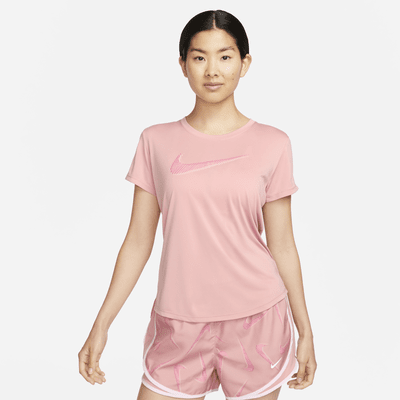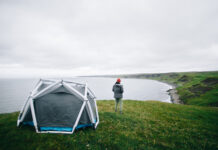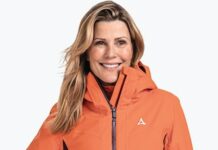Running is a great way to stay fit and healthy, but it can also be challenging to dress appropriately for different weather conditions.
You don’t want to be too hot or too cold, too wet or too dry, or too uncomfortable or restricted.
In this blog post, we will give you some tips on how to dress for running in different temperatures, from freezing to scorching.
We will also recommend some of the best nike womens running clothes that can help you run comfortably and confidently in any season. Let’s get started!
How to Dress for Running in Cold Weather: 40°F and Below?
Running in cold weather can be invigorating and refreshing, but it can also be risky if you are not prepared.
The key for dressing for a winter run is layers. Layers allow you to adjust your clothing according to the changing temperature of your body and the environment.
Here are some general guidelines on how to layer for running in cold weather:
Base layer
This is the layer that touches your skin and should be made of a breathable and moisture-wicking fabric, such as polyester or wool.
The base layer should fit snugly but not too tight, and should cover as much of your body as possible.
The base layer helps keep you dry and warm by moving sweat away from your skin and trapping heat close to your body.
Mid layer
This is the layer that provides insulation and warmth. The mid layer should be made of a lightweight or thermal fabric, depending on the wind-chill factor.
The mid layer should fit loosely over the base layer, but not too bulky or restrictive. The mid layer helps keep you warm by trapping air between itself and the base layer.
Outer layer
This is the layer that protects you from the elements, such as wind, rain or snow.
The outer layer should be made of a windproof or waterproof fabric, depending on the weather conditions.
The outer layer should fit comfortably over the mid layer, but not too loose or flappy.
The outer layer helps keep you dry and comfortable by blocking the wind and moisture from reaching your skin.
Here are some examples of what to wear for running in different cold temperatures:
- 60°F:tank top and shorts
- 50°F:short sleeve shirt and shorts
- 40°F:long sleeve shirt, shorts or tights, gloves (optional), headband (optional)
- 30°F:long sleeve shirt, tights, gloves, headband
- 20°F:base layer shirt, mid layer shirt or jacket, tights, gloves, headband
- 10°F:base layer shirt, mid layer shirt or jacket, outer layer jacket or vest, tights or pants, gloves or mittens, hat or balaclava

Don’t forget to cover your extremities in cold weather, such as your ears, hands and feet.
These are the parts of your body that lose heat faster than others and are more prone to frostbite.
You can wear a hat or a headband to cover your ears; gloves or mittens to cover your hands; and socks and shoes that are warm and water-resistant to cover your feet.
How to Dress for Running in Hot Weather: 80°F and Above?
Running in hot weather can be challenging and exhausting, but it can also be enjoyable if you are well-prepared.
The key for dressing for a summer run is lightness. Lightness means wearing clothes that are light in weight, color and fabric.
Here are some general guidelines on how to dress for running in hot weather:
Fabric
Choose fabrics that are breathable, moisture-wicking and quick-drying. These fabrics help keep you cool by allowing air flow and sweat evaporation.
Avoid fabrics that are cotton-based or dark-colored. These fabrics tend to absorb heat and moisture and make you feel hotter and heavier.
Fit
Choose clothes that fit loosely and comfortably. These clothes help keep you cool by creating space between your skin and the fabric.
Avoid clothes that fit too tight or too loose. These clothes tend to restrict your movement or create friction and chafing.
Here are some examples of what to wear for running in different hot temperatures:
- 80°F:tank top and shorts
- 90°F:sports bra and shorts
- 100°F:sports bra and bikini bottoms
Don’t forget to stay hydrated in hot weather, as you will lose more fluids and electrolytes through sweating.
Drink water before, during and after your run, and consider using a hydration pack or belt to carry water with you.
You can also drink sports drinks or eat salty snacks to replenish your electrolytes.
How to Dress for Running in Different Humidity Levels?
Humidity is another factor that affects your running performance and comfort.
Humidity is the amount of water vapor in the air, and it affects how well your body can cool down through sweating and evaporation.
When the humidity is high, the air is already saturated with water vapor, which makes it harder for your sweat to evaporate and cool you down.
When the humidity is low, the air is dry, which makes it easier for your sweat to evaporate and cool you down, but also dehydrates you faster.
Here are some tips on how to dress for running in different humidity levels:
High humidity
Wear light, breathable and moisture-wicking fabrics that help move sweat away from your skin. Avoid cotton-based or dark-colored fabrics that trap heat and moisture.
Drink more water and electrolytes to prevent dehydration and heat exhaustion.
Low humidity
Wear light, breathable and quick-drying fabrics that help keep you cool and dry. Avoid fabrics that are too thin or too loose that expose your skin to the sun or wind.
Drink more water and use lip balm and moisturizer to prevent dryness and chapping.



